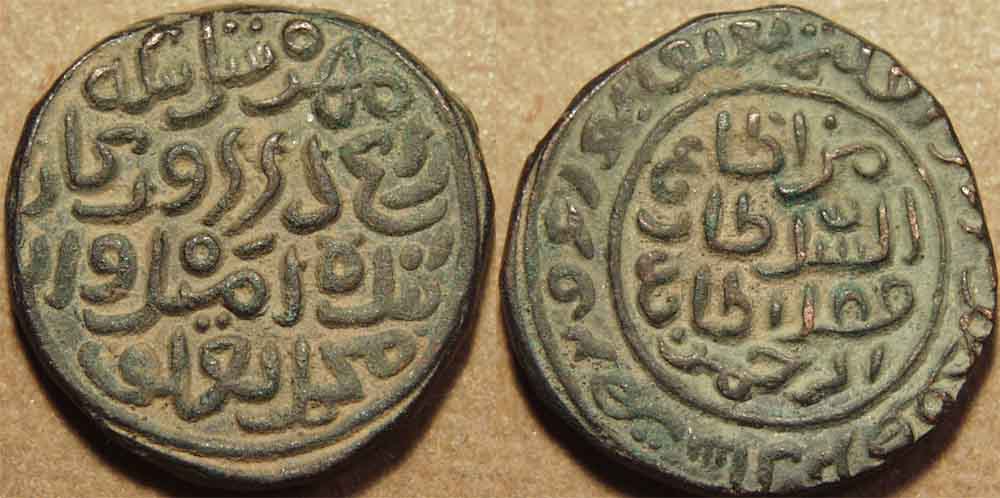Currency Demonetisation: Tughlaq Did It Way Back in the 14th Century and This is What Happened!
During his reign, Muhammad Bin Tughlaq demonetised gold and silver coins and replaced them with copper and brass ones! Here is the fascinating story of how this unique currency change took place in 14th century India.

The recent announcement about the demonetisation of ₹ 500 and ₹ 1000 currency denominations has caused ripples of excitement about its impact on black money as well as anxiety about what’s in store for the common man. Whether the bold move will lead to significant benefits is something that will emerge only with the gradual passage of time, but one immediate impact is already clear – the lives of millions of Indians have been sent into a tizzy.
While the sudden decision has received as many brickbats as bouquets, it has also reminded many of a medieval monarch who once tried his hand at demonetising in 14th century India – Muhammad Bin Tughlaq. Demonitisation is the act of retiring an old unit of currency and replacing it with a new currency unit. During his reign, Tughlaq had demonetised gold and silver coins and replaced them with copper and brass ones!
Here is the story of Muhammad Bin Tughlaq’s infamous currency change in 14th century India.

Photo Source
One of the most interesting personalities of medieval India, Muhammad Bin Tughlaq ruled over the northern parts of the Indian subcontinent and the Deccan from 1324 to 1351 AD. A learned man with an open mind and a unique streak of intellectual creativity, Tughlaq was well versed in poetry, astronomy, religion and philosophy.
A ruler whose real expertise shone in the times of war, Tughlaq took some very bold and strong measures to reform the administration during his chequered reign as the Sultan of Delhi. In 1329 AD, he shifted his capital from Delhi to the more centrally located Devagiri in Maharashtra, which was renamed Daulatabad. He had many motives for doing so – other than saving his capital from recurring Mongol raids, the move would cement his control over the rich fertile lands of the Deccan and ensure access to the busy ports on the Gujarat and the Coromandel coast.
While there was nothing fundamentally wrong with Tughlaq’s pragmatic decision, his blunder lay in ordering the entire population of Delhi to move to the new capital (instead of just shifting his official court). Despite the many arrangements that were made for the convenience of the travellers, the suffering of the people was terrible and many people died on the way.

Photo Source
However, no sooner had the Sultan reached Daulatabad when trouble broke out in Bengal as well as on the northwestern frontier. Tughlaq realized that while his new capital was distant enough to be safe from Mongol invasions, it was also too far away to protect northern India. So, the mercurial ruler re-ordered his people to return to Delhi. Thousands died in the punishing 1500 km return march to Delhi. While Tughlaq did try to make amends by abolishing multiple taxes and organising relief measures, the financial loss was immense and the consequences for Delhi grave.
You May Like: How the Demonetisation of INR 500 and INR 1000 Will Affect You and What You Can Do About It
Not only had the imperial city lost many of its people, it had also lost its former prosperity and grandeur. The widespread public resentment against the Sultan also led to revolts and bitterness that rankled the Sultanate for years to come. Though Tughlaq invited many scholars and artistes to settle in the city, the impact of this incident had far-reaching consequences; Ibn Batuta, the famous traveller who came to Delhi in 1334 (during Tughlaq’s reign), wrote in his memoirs that he found certain parts of the city still deserted.

Photo Source
However, Tughlaq was a ruler who delighted in administrative experiments. When famine-like conditions and frequent revolts began straining his coffers, Tughlaq found it difficult to maintain the supply of gold (dinars) and silver (adlis) coins on a large scale. So, he introduced a token currency system and minted vast quantities of new copper and brass coins (tankas) that could be exchanged for fixed amounts of gold and silver.
While this decision helped the Sultanate’s finances initially, it also proved to be lucrative to forgers who began issuing a large number of fake coins. Loopholes like a simple design (the coins just had some inscriptions) and no royal seals made the task easier for forgers. Every house became a mint for copper coins while gold and silver coins were zealously hoarded. Soon, the market was awash with fake coins.
As good money was driven out of circulation, the token coins became practically valueless, leading to hyperinflation. Foreign traders also refused to accept them, paralysing trade. Realising that his scheme had failed, Tughlaq withdrew the currency in an attempt to stem the economic chaos.

Photo Source
However, the number of fakes was so large that for many years, mounds of worthless copper and brass coins, rejected by the government, remained piled outside the royal fort. This economic chaos and public resentment were also one of the major reasons why, by the time Tughlaq died, his kingdom had diminished to a small region around Delhi.
Muhammad Bin Tughlaq had the best of intentions and his moves were bold for his time but were poorly implemented. Also, in his hurry to realise his dreams, he severely punished anyone who opposed his hasty moves. This, combined with his habit of acting without assessing risks and without providing for unforeseen difficulties, resulted in his administrative gambles ending in disaster. It’s small wonder that historians refer to Tughlaq as the ‘wise fool’!
However, it was not the only time in ancient history that demonetisation took place. There are other examples that highlight the incredible fragility of the monetary system. In 1735 AD, Nadir Shah devalued his own currency, making the double paisa coin into a single paisa coin, and ordered money lenders to store no more than 50 mahmoodis (silver coins) in their shops. Unhappy with the economic results of this move, he withdrew the order later and even issued new coins, but by then the devaluation had already made common commodities more expensive.
Interestingly, there are two other examples of demonetisation, one in 7th century China (that allowed paper notes to be exchanged for gold, silver or silk) and one in the 13th century by Persian king Gaykhatu (whose experiment caused so much chaos that he had to backtrack within eight days)!
Like this story? Have something to share? Email: contact@thebetterindia.
NEW! Log into www.gettbi.com to get positive news on Whatsapp.
This story made me
- 97
- 121
- 89
- 167
Tell Us More
We bring stories straight from the heart of India, to inspire millions and create a wave of impact. Our positive movement is growing bigger everyday, and we would love for you to join it.
Please contribute whatever you can, every little penny helps our team in bringing you more stories that support dreams and spread hope.



















